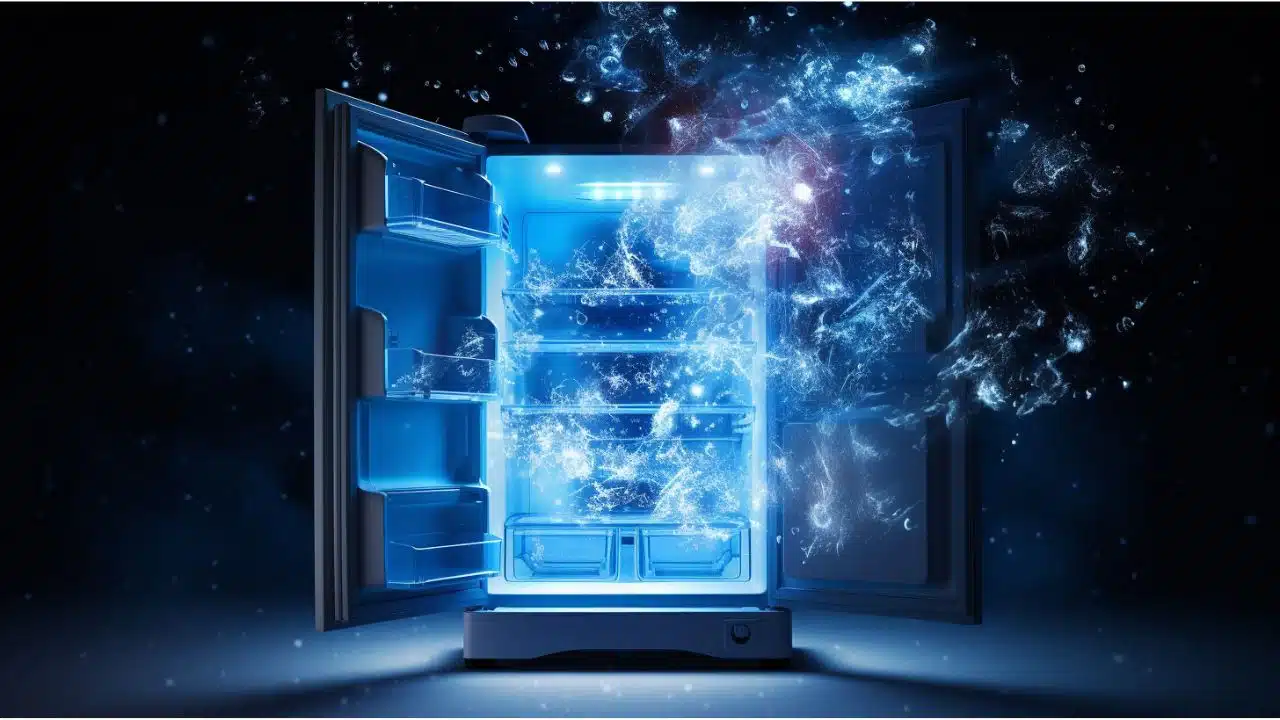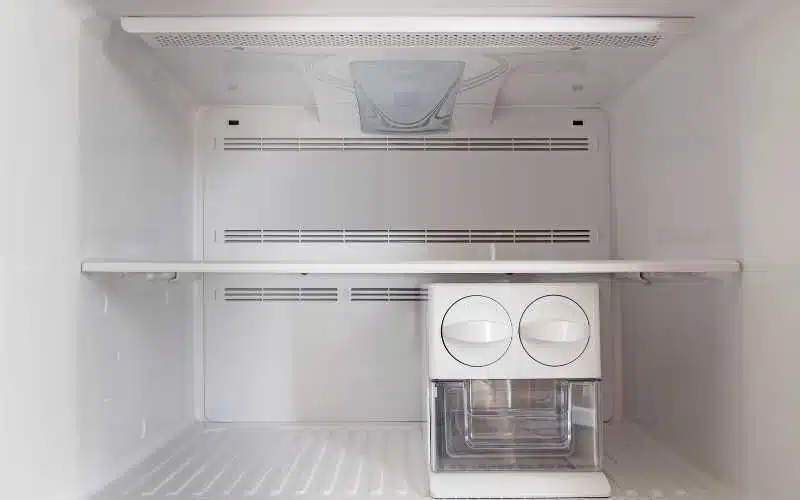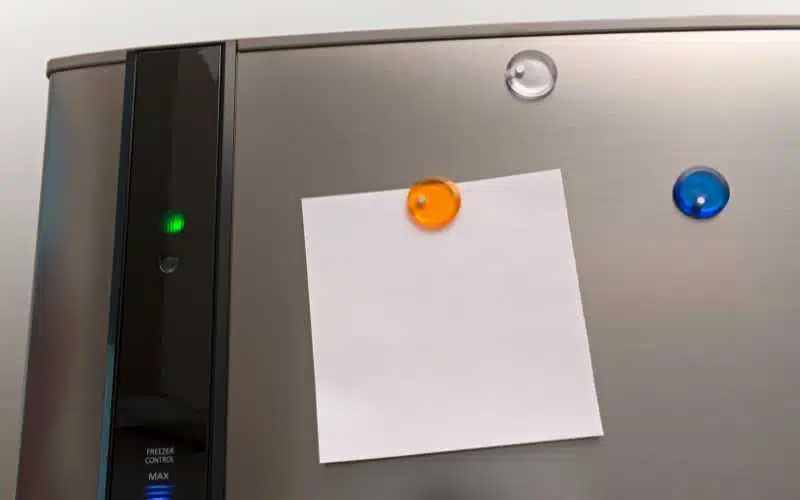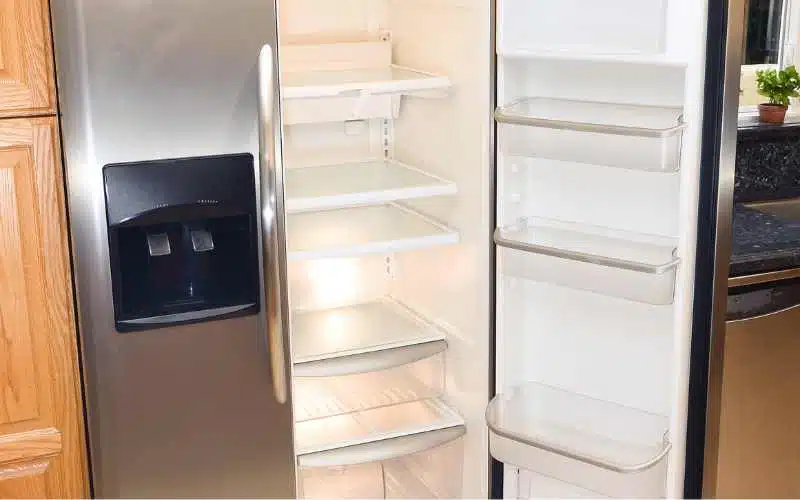It is usual for your refrigerator to go through a cycle where it turns on the compressor for cool air to come back into the fridge.
Whenever you open your refrigerator to get something and close it back, the air in it keeps getting warmer, and the fridge needs to refresh cooler air.
This analysis brings us to the question, “how often should your refrigerator cycle before turning on and off again?”.
The average refrigerator cycle for when your refrigerator stays closed is 30 minutes. Certain factors impact the time your refrigerator would need to complete a cycle, like the outside temperature, how frequently you open your fridge and the contents in your fridge.
How Long Should a Fridge Run Between Cycles?

An average fridge should run for 12 to 15 hours between each cycle. After this time, the refrigerator uses a defrost heater to melt frosts that gather on your evaporator coils.
Once the defrost heater handles these frosts, your fridge can continue re-running its cycle. Just like the cycle can be affected by certain factors, some other factors can influence the defrost time.
Every refrigerator cycle varies depending on the model, size specifications, the content of your fridge, and the number of times you open your fridge during running time.
Some of these factors significant factors are:
- The size of the fridge. Of course, bigger fridges will take more time to run between cycles than smaller ones because they would use larger energy.
- The type of food you store in the fridge. If you load your fridge with more perishable foods, then your fridge would have to run faster to maintain a specific temperature.
- How old is your fridge? When your fridge is new, it is normal for it to run for a shorter time compared to older models.
Why Does My Refrigerator Keep Cycling On and Off?
Two common reasons why refrigerators cycle on and off too often are wrong temperature settings and the location you place them in your home.
Your refrigerator’s cycle time depends on the model, so there is no particular time for cycling except for a range.
For instance, if you place your fridge in a garage and then in a cool basement, the cycle time in these locations would differ due to the temperature.
A refrigerator in a garage would cycle more than a refrigerator set in a cool basement due to the temperature difference.
Also, since newer fridges are more energy-efficient, they need to cycle less than older ones. With all these, the rule of thumb still states that most refrigerators should cycle every two hours.
Anything way more than that is not a normal situation, so if you are worried about your refrigerator cycling more than usual, there are a few tips that can help;
- The first thing you should do is check your temperature settings to see if you set them accordingly. If they’re not, ensure that you adjust them accordingly.
- In addition, you can try moving your fridge to a cooler area of your home if that’s possible.
- If doing all that doesn’t solve the problem, then you should seek professional help so they can troubleshoot the problem and provide you with a long-lasting solution.
Other than your compressor running for too long, there are cases where your refrigerator cycle is short.
In this case, you hear your compressor kick off and start, but after about 30 seconds or so, it kicks off again.
Your refrigerator’s short cycling is a problem that you can fix quickly. It is not likely to cause harm to your food.
However, it can tremendously lead to a rise in your electricity bill if you don’t attend to it immediately.
Some common causes of short circuits are;
- Incorrectly set the thermostat.
- Dusty coil operators prevent efficient operations.
- Faulty capacitors and compressors.
- Cord damage by physical power.
After being sure of what the problem exactly is, you can be able to fix this problem without stressing.
If you notice that the coils are dirty and dusty, you should clean them immediately and recheck to see if the fridge usually operates again.
When you notice that your thermostat is set to the wrong temperature, resetting it to the correct one can help solve this issue.
In the case of a frayed power cord, ensure that you immediately cut the power supply to the fridge and seek professional help.
| Reasons For Short Cycling | Solutions To Short Cycling |
|---|---|
| Incorrectly set thermostat | Reset your thermostat to a different temperature |
| Faulty capacitors and compressors | Replace faulty capacitors, seek professional help if you can’t fix it yourself |
| Power cord damage | Seek professional help |
| Dusty coil operators | Clean up your coil operators frequently. |
Is It Normal for a Fridge to Turn on and off?
Your fridge is not supposed to turn on and off in common situations. Some common reasons this happens are faulty thermostats, rotten circuit boards, overheating, or even a low power source.
Luckily for you, this is a pervasive issue, and the fixes to these problems are straightforward.
To fix this issue, you have to be sure about what the problem is, but some general tools you would need include;
- A nut driver set.
- A screwdriver set.
- Cleaning supplies.
- Needle nose pliers.
- Replacement parts ( depending on what the problem is).
- Replacement fuse.
Some Common Reasons Why Your Refrigerator Won’t Turn on And Their Fixes?
Some reasons why your refrigerator won’t turn on and their simple fixes are as follows;
#1. Fridge Not Plugged In
Yes, we know that this reason may sound too simple and may not even deserve to be on the list, but research says that this is a common reason why your refrigerator would refuse to start.
You should check on your fridge’s power cord to ensure that a pet has not knocked it, or your child or even you.
You may have mistakenly kicked it over while cleaning, but you didn’t notice. The only fix to this is plugging your power cord incorrectly, and your fridge should work perfectly.
In the case of a frayed power cable, ensure that you call on an electrician and not fix it yourself.
#2. Faulty Defrost Timer
Defrost timers help control when your defroster should kick in and is not supposed to run at all times.
When your fridge refuses to switch on, then there is also a possibility that you have a faulty defrost timer.
In most cases, you would need a professional to replace your defrost timer, but it depends on your refrigerator model and the age. You can also check your manual to see if you can repair your own defrost timer.
Below is a general guide to repairing your defrost timer;
- Unplug your fridge and locate the defrost assembly.
- Detach the defroster assembly by unscrewing the screws.
- You would see your defrost timer in the middle of the defroster assembly. Unplug the cables from the harness.
- You can flip the timer housing over to unscrew the timer.
- You should now screw your new defrost timer in the correct position and plug back the cable harness.
- Reattach the entire assembly and plug your fridge back in; your fridge should be working perfectly now.
#3. Check Your Fuse Box
Although the fuse doesn’t have anything to do with the fridge, a blown a fuse can also lead to a broken fridge.
When you notice issues like this, especially if it happens with other kitchen appliances, you should head over to your fuse box to ensure that the fuse controlling your kitchen hasn’t blown.
A blown a fuse usually occurs when you run too many appliances on your fridge simultaneously, overloading it. Replacing a blown a fuse can be very easy, but you need an electrician to do the job.
Is a Refrigerator Supposed to Run Constantly?
Refrigerators are not supposed to run constantly, but if yours does, it indicates a faulty operation.
Some common reasons why your refrigerator runs constantly are;
#1. Faulty Defrost Thermostat
The defrost thermostat is an essential component of the refrigerator because it prevents frosts from piling up on several refrigerator components.
The defrost thermostat is also responsible for sending signals to your heater. If it is broken, the frosts on your condenser coil will accumulate, and air wouldn’t be able to get to the refrigerator properly.
When this happens, your fridge will keep running all the time in a vain attempt to keep its components cool.
#2. High Internal Temperature
Refrigerators have to be set within a specific temperature for them to be able to cool properly. If the refrigerator temperature is too high, the fridge will constantly run to cool its interior.
To prevent this from happening, ensure that you set the interior temperature of your refrigerator based on the manufacturer’s specifications.
Generally, the refrigerator’s temperature should be between 35-38 degrees F.
#3. Dirty Condenser Coils
Not all cases of a dirty condenser coil result in your refrigerator stopping; in some cases, it is the other way around.
So, when your condenser coils are dirty, and the refrigerants send cool air to the fridge, they must pass through the condenser coils.
If these coils are dirty, a sufficient amount won’t be delivered. Instead, your fridge would keep running in the bid to cool its interior.
How Often Does a Fridge Run Per Day?
Your fridge should run for about four to six hours before going into the defrost cycle and then shutting off for about 30 minutes.
The definite answer depends on the size and model of your refrigerator. So, if you have a fridge with a compressor, it should run for a longer time to keep the food cool.
If you use a thermoelectric fridge, it will only run whenever necessary. So, a thermoelectric fridge would run for a shorter period compared to fridges built with a compressor.
Final Thoughts
There is no definite answer to how often your refrigerator cycle should go on, and there is no such thing as a regular cycle, but that doesn’t mean there are no limits.
If you notice that your refrigerators are running beyond normal limits and have an abnormal cycle, you should troubleshoot the problem.
Always look for the reasons listed in the article and call on a professional if necessary.





